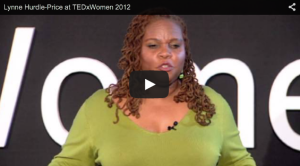Three Delicious Ways
Ok, I admit it, I’ve been on ya’ll about having Courageous Conversations, especially during these challenging times. I have been telling you that we can’t keep discarding and unfriending and ghosting and dismissing and name calling and canceling and… you get the point. But so many of you have been reaching out because you want to do that, you’ve tried to do that, you’ve kept the door open to do that but one question Lynne. How do we get them to talk?
Ya’ll ask the hardest questions. Yes, this one’s tough, because people who don’t want to talk like it that way and are determined to keep themselves safe, their way.
For the longest time, not talking was my safety mechanism, which I think few people knew because I was a talker. Yes, I was both things. I could talk for hours about the things of the imagination and performance and dreams of a vibrant life. Don’t come near my feelings or ask me to share about life’s abuses toward me.
That was off-limits to everybody. In my mind/view/world, it was not emotionally safe to go there.
This is often what I hear from and see in clients who do not want to talk about the conflicts they are facing. But you know there’s tension, something wrong somewhere. You may even suspect a specific cause and you feel sure that if everyone would just be honest about what has and is happening and the feelings it has caused to come up, you’d all be on the road to better. Better communication, better understanding, better morale, better relationships. You just want things to be better.
Well, everyone showed up. You can tell by the body language that most folks are tense or uncomfortable, others are giving off that I won’t talk until someone talks first vibe. You feel that heart-thumping moment where tension meets excitement. You’re thinking… well, this could be really bad or really good.
Now what’s your move?
Three delicious ways:
You are going to have to model.
That’s right, if you want them to talk, you will need to model some things.
- Modeling psychological safety is number one
You have to know if they feel safe coming to the table and talking. That is tricky if you don’t already know. You could try an anonymous survey or come straight out and ask them. Both may not get you the truth, so you need to turn the light on yourself. In what ways have you discouraged honest conversations? In what ways have you modeled the kind of sharing that you are looking for from them? When there has been open conversation in the past, has there been any retribution on your part? How will you ensure that there will be none this time? Setting group agreements is always helpful provided there is group input, and everyone sticks to them throughout the entire time. Be willing to go so far as to ask yourself and them the question… do they feel psychologically safer to have the conversation without you present? - Model the kind of sharing you would like to see
You may have to start things off by sharing why this conversation feels important to you, how it has affected you, them, the dynamics of the team/group/family. You can start out sharing and then open it up to the group with a question like: what would you like to share about this from your perspective? Let them know that the intention is to have a conversation and to hear from all voices so that you can get a full picture of what is happening. If you want the sharing to go deeper then you have to be willing to be vulnerable with your own sharing. You can’t expect people who want to avoid feelings to sit back and listen to you dodge yours. - Model being accountable
If there is one thing that seems to bring people together, it is the conversation around accountability. Everyone seems to believe that no one wants to be accountable for their actions. If this is a common belief, then you have to show them something different. If your door is always open, then make sure that it is true or don’t say it. Say what you mean and then own when you have missed the mark and do it without defensiveness and dragging other issues in on top of it. Stand on your own. I did that. You’re right it was the wrong thing to do. Or, I have had an open-door policy always and it is clear that you are coming to me to talk and that is great. Now we need to talk with each other as a team/group/family.
These are three delicious ways. I think they are delicious because what they can produce will create a hunger for more juicy conversation and more tasty examples of helpful, honest, and constructive talk. It’s awkward at first, but sink into the silence of the moment and then get in there and get them talking. Over time, you are going to love the results.
You’ve got this!
In Love,
Dr. Lynne





